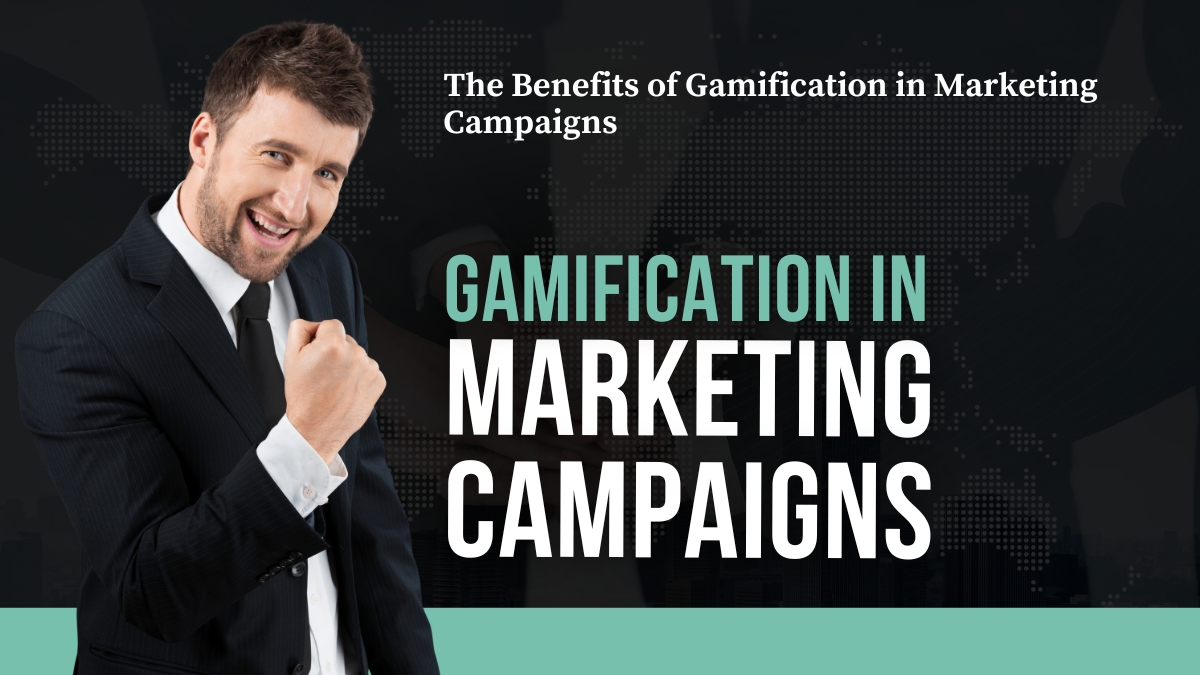
Gamification has become a popular strategy for businesses to engage their customers in marketing campaigns. Gamification is the use of game elements and mechanics in non-game contexts, such as marketing campaigns, to increase user engagement, motivation, and loyalty. Here are some benefits of using gamification in marketing campaigns:
1. Increases engagement:
Gamification is an innovative approach to marketing campaigns that have revolutionized the industry. By using game elements such as rewards, challenges, and levels, marketers can create an interactive experience for users that increases engagement and drives conversions. This strategy has proven effective in a wide range of industries from education to healthcare.
One major benefit of gamification in marketing campaigns is the ability to create a sense of competition among users. By offering incentives for completing tasks or reaching certain milestones, brands can motivate consumers to engage more with their products or services. This not only increases user engagement but also helps build brand loyalty over time. Additionally, gamification provides valuable data and insights into consumer behavior, allowing marketers to fine-tune their strategies and improve overall performance.
2. Enhances brand loyalty:
Gamification is a powerful tool that can help businesses to enhance their marketing campaigns and increase brand loyalty. By incorporating game-like elements into marketing strategies, companies can create a more engaging and interactive experience for their customers. In turn, this can foster an emotional connection between the customer and the brand, which can help to boost loyalty over time.
One of the key benefits of gamification in marketing campaigns is that it allows businesses to incentivize certain behaviors or actions from their customers. For example, by offering rewards or points for completing certain tasks or making purchases, brands can encourage customers to engage with them on a more regular basis. This type of engagement not only increases the likelihood that customers will make repeat purchases but also helps to build a sense of community around the brand.
Another way that gamification enhances brand loyalty is by providing customers with a sense of accomplishment or achievement.
3. Encourages user-generated content:
Gamification has become a popular trend in marketing campaigns over the years. This technique of using gaming elements to engage with customers has proved to be highly effective for many brands. One of the benefits of gamification is that it encourages users to create and share content related to the campaign. By integrating game mechanics into your marketing strategy, you can encourage your audience to participate and interact with your brand on a deeper level.
When users are engaged in a fun and interactive experience, they are more likely to share their experiences with others. This can increase brand awareness as well as promote user-generated content (UGC). UGC is an excellent way for brands to get free publicity and gain social proof from their customers. When consumers see other people engaging with a brand’s gamified campaign, they may feel more inclined to join in themselves.
4. Provides data and insights:
Gamification is becoming an increasingly popular tool in modern marketing campaigns. One of the key benefits of using gamification in your marketing strategy is that it provides valuable data and insights into customer behavior and preferences. By tracking customer interaction, you can gain a deeper understanding of what motivates your audience and what they respond positively to.
For example, if you’re running a gamified loyalty program, you can track which rewards are most popular with customers or which challenges they find most engaging. This data can then be used to tailor future marketing efforts towards these preferences, increasing engagement and improving ROI.
Moreover, gamification allows for real-time feedback on how customers interact with your brand. This feedback loop enables marketers to make adjustments based on user behavior and keep their campaigns relevant and engaging over time.
5. Increases conversions:
Gamification has become an increasingly popular tactic in marketing campaigns, and for good reason. By providing customers with incentives to take a specific action, such as making a purchase, gamification can increase conversions and ultimately lead to higher revenue for businesses. With the rise of online shopping and e-commerce, competition among businesses has become more intense than ever before. Gamification provides a unique way for businesses to stand out from the competition and engage with their target audience.
One of the main benefits of gamification is that it encourages customer engagement. When customers are actively participating in a game or challenge, they are more likely to be immersed in the experience and spend more time on your website or social media page. This increased engagement can lead to a deeper connection between your brand and your audience, which in turn can lead to increased customer loyalty.
6. Creates a unique experience:
Gamification is a powerful tool to create a unique and memorable experience for customers. By blending elements of play and competition into marketing campaigns, companies can set themselves apart from their competitors and engage with consumers in a way that feels fresh and exciting. The benefits of gamification are many, including increased brand loyalty, higher engagement rates, and improved customer satisfaction.
One major benefit of gamification is its ability to create emotional connections between customers and brands. When people participate in games or competitions, they become invested in the outcome and feel a sense of accomplishment when they succeed. This emotional connection can translate into stronger brand loyalty as customers associate positive feelings with the company that provided them with such an engaging experience. Additionally, by tapping into our natural desire to compete and win, gamified marketing campaigns can increase engagement rates significantly compared to traditional advertising methods.
Conclusion
Gamification can be a powerful tool for businesses to increase engagement, enhance brand loyalty, encourage user-generated content, provide valuable data and insights, increase conversions, and create a unique experience for customers. By incorporating game elements into marketing campaigns, businesses can create a more engaging and memorable experience for their customers, leading to long-term success.